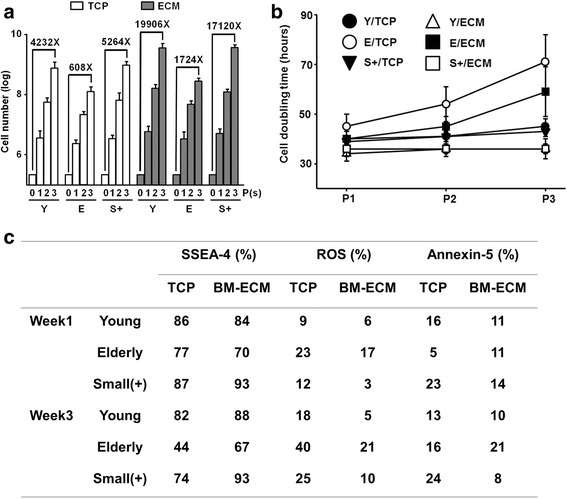Fig. 5.

Small(+) cells retain their “youthful” phenotype through multiple passages on ECM. Young (Y), elderly (E), and small(+) (S+) MSCs were seeded at 2000 cells/cm2 onto TCP or ECM and subcultured in growth media for 3 weeks. Cells were passaged every 7 days and reseeded at the same density used initially (n = 10 donors (five elderly, five young) tested in replicate experiments). a Total number of cells obtained after culture increased with each passage and was dependent on culture surface and cell type. Compared to culture on TCP, culture on ECM for three passages dramatically increased the number of Y and S+ cells (19,906-fold and 17,120-fold, respectively). As expected, the yield of E cells was much lower. b Cell doubling time was affected by cell type, culture surface, and passage number. At P3, Y and S+ cells had shorter doubling times on TCP than E cells and culture on ECM retained shorter doubling times (S+ < Y < E). c Immunophenotypic properties of Y and S+ cells were maintained through P3. Both Y and S+ cells maintained high expression of SSEA-4 and low levels of ROS and annexin V with culture on ECM. BM-ECM bone marrow-derived extracellular matrix, TCP tissue culture plastic, P passage, ROS reactive oxygen species, SSEA-4 stage-specific embryonic antigen-4
